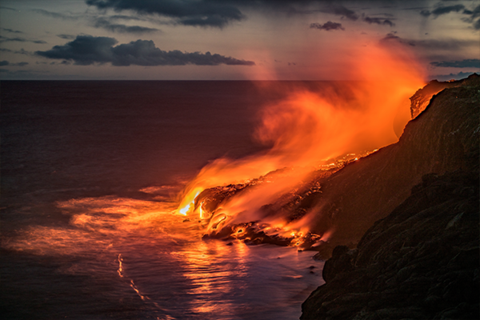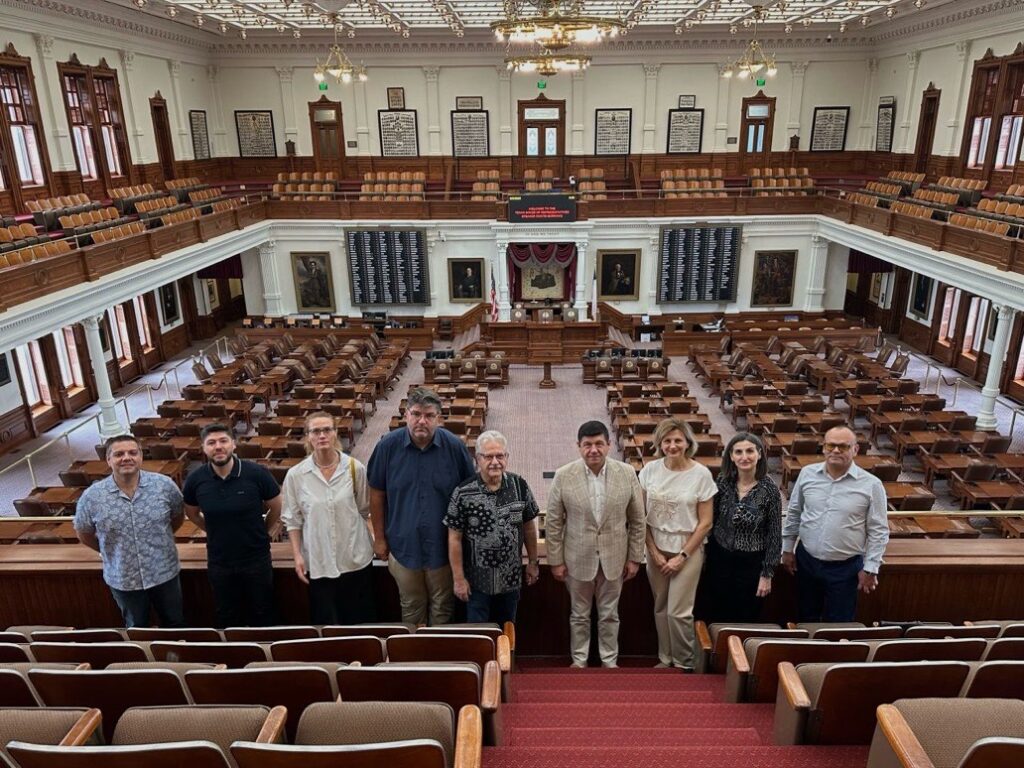By Tim Shea, Special Contributor | What is the economic impact of fires and floods?
In an expose published last Tuesday, writers at The Washington Post examined one of the hidden tragedies of Hawaii’s recent volcanic activity. No, not the loss of homes and cars as they were swallowed by an unrelenting creep of molten lava; that’s been covered in thorough and dramatic detail. The Post’s piece instead focuses on the grueling fact that many of these homes were uninsured*. Residents will have to pay out of pocket if they want rebuild, assuming that the property is salvageable at all.
To an extent, this reality is harsh but understandable. These people are, after all, choosing to live on the side of a volcano that has been actively erupting since 1983. Some locals even ascribe the area’s charm to the fact that most developers find it too risky to build out. Pele’s wrath has become a fact of life, an acceptable tradeoff for maintaining an idyllic lifestyle on the east side of paradise. Home prices and building techniques have adjusted accordingly.
Buried within this tale of human loss and resilience, however, is an interesting nugget of truth, an almost accidental insight into one of the nation’s more head-scratching policies. As they write: “With a recent onslaught of deadly natural disasters across the country — including Hurricanes Harvey, Irma and Maria and the California wildfires — Kilauea’s eruption is an unusual but relatively tame disaster.”
And it’s true. While this most recent uptick in volcanic activity has made for gripping headlines and mesmerizing footage, the lava has destroyed less than 50 homes and other structures. Destructive events such as this one aren’t exactly frequent, either. According to the National Park Service, only 187 structures have been consumed since 1983. (Other sources give a slightly higher estimate.)
So yes, the danger isn’t exactly negligible. But compare it to, let’s say, flood damage from major storm systems. Hurricane Harvey destroyed 30,000 to 40,000 homes over the course of a week, giving it the dubious honor of being orders of magnitude more catastrophic than Kilauea. Even worse, such instances aren’t rare; parts of Houston flood annually, and major floods seem to strike every few years or so. Given the repetitive and calamitous nature of these events, one would expect that it would be harder for Houstonians to get flood insurance than residents of the Big Island to get fire insurance, right?
Not exactly. Enter the National Flood Insurance Program (NFIP). Largely in response to private insurers unwillingness to underwrite flood damage, the Federal government created the controversial program in 1968, authorizing it to subsidize insurance policies in flood prone areas. Toss in $1.6 billion in Federal disaster aid**, and rebuilding after hurricanes becomes downright affordable. Well, sort of.
Now, there are good reasons why it might make sense to subsidize water flood insurance and not lava flood insurance; lava flows often rend landscapes permanently uninhabitable. It’s easy to wonder if we haven’t gotten it completely backwards. Wouldn’t it make more sense to subsidize insurance against a form of disaster that is relatively rare, relatively contained, and quite literally attributed to the act of a god?
If nothing else, the homesteaders on Kilauea’s slopes can serve as a blueprint for flood plains communities in a post-NFIP world: rugged individualists in small scale developments willing to take risks to enjoy the lifestyle they’ve grown to love. As weather patterns grow more erratic and the NFIP sinks deeper and deeper into insolvency, there are certainly those that would love to see the program ended. And, when it comes down to it, their arguments make a fair amount of sense, as the dearth of insurance in lava zones attests.
At the very least, Congress should consider extending the NFIP’s protections to the potential victims of more niche disasters, volcanic eruptions included. It’s only fair, and no doubt many of the area’s residents would be eager for the relief.
Pending Pele’s approval, of course.
*According to Hawaii State Insurance Commissioner Gordon Ito, lava damage is covered under fire insurance policies, but providers willing to insure houses in the area have become increasingly scarce as volcanic activity persists on the island.
**As of writing, The Island of Hawaii has yet to be declared a Federal disaster zone.
Here is an interesting YouTube video of stunning footage of Hawaii Kilauea volcano eruption never seen before for additional context:
About AngelouEconomics:
AngelouEconomics has worked with numerous professional and business associations in building dozens of unique economic impact studies among other types of projects including site selection projects as well as strategic economic development projects. Some projects have examined the effects of statewide policy measures, such as the Texas Bathroom Bill or ban on Sanctuary Cities. Other projects have measured the contribution of member networks in terms of jobs, wages, and total economic output. Like this study for Prospera, a nonprofit organization which specializes in providing bilingual assistance to Hispanic entrepreneurs in Florida. Economic impact studies are effective tools for quantifying and illustrating the value of individual professional and business associations. They are versatile, as they can illustrate the value or impact of a specific policy or quantify the economic contribution of your members to the local, regional, and nationwide economies.
Want to Learn More?
If you would like to learn more send us an email at info@angeloueconomics.com














